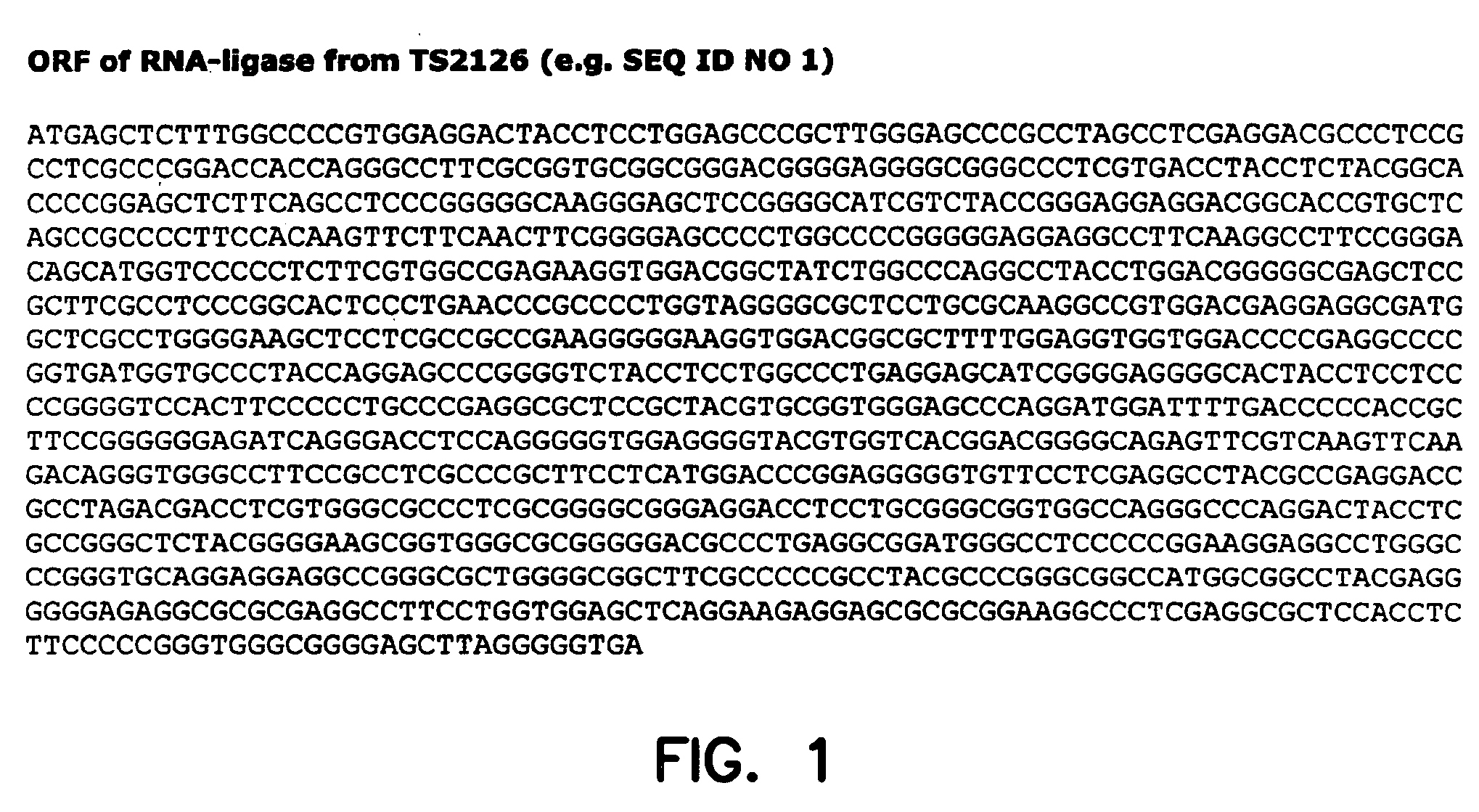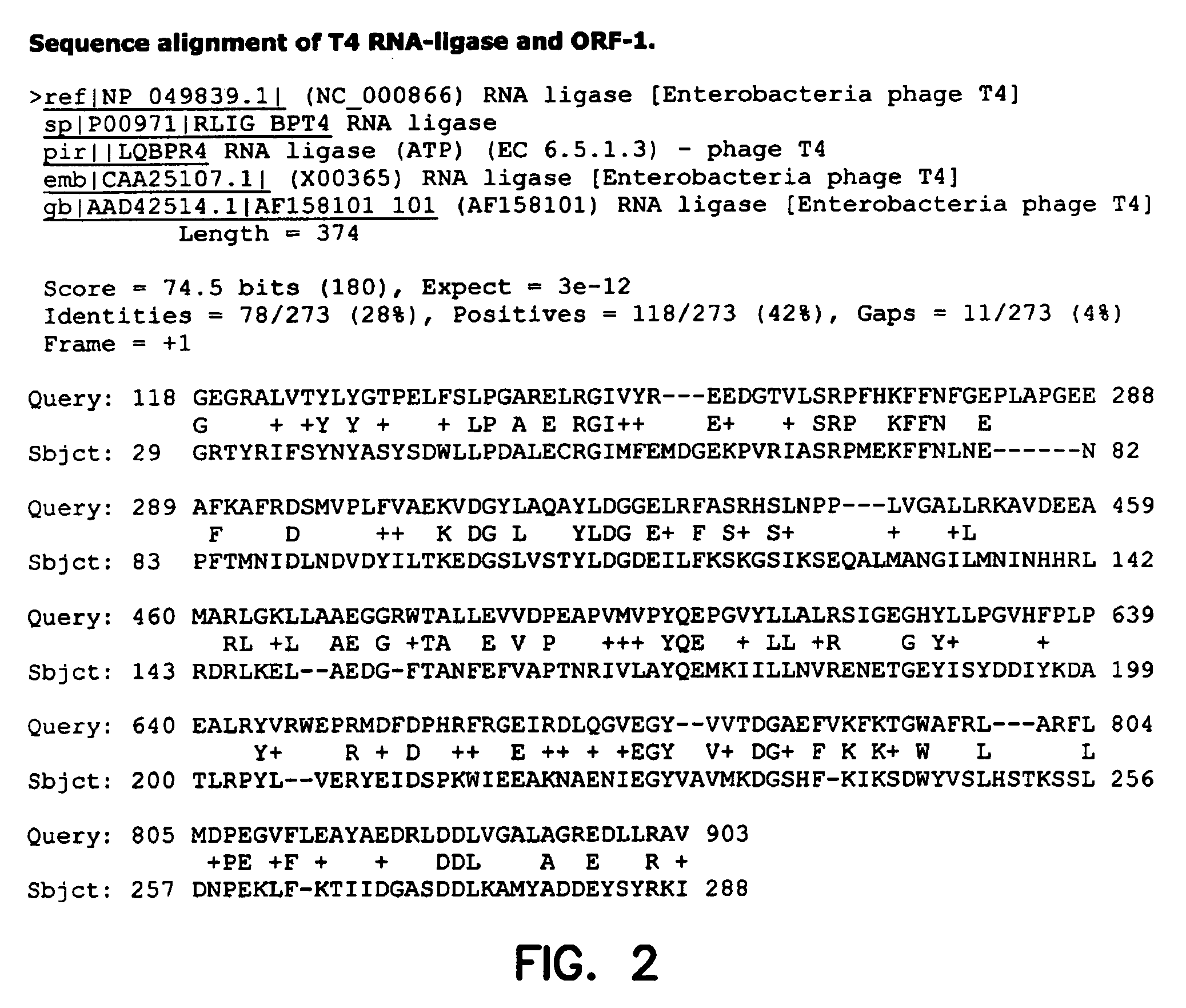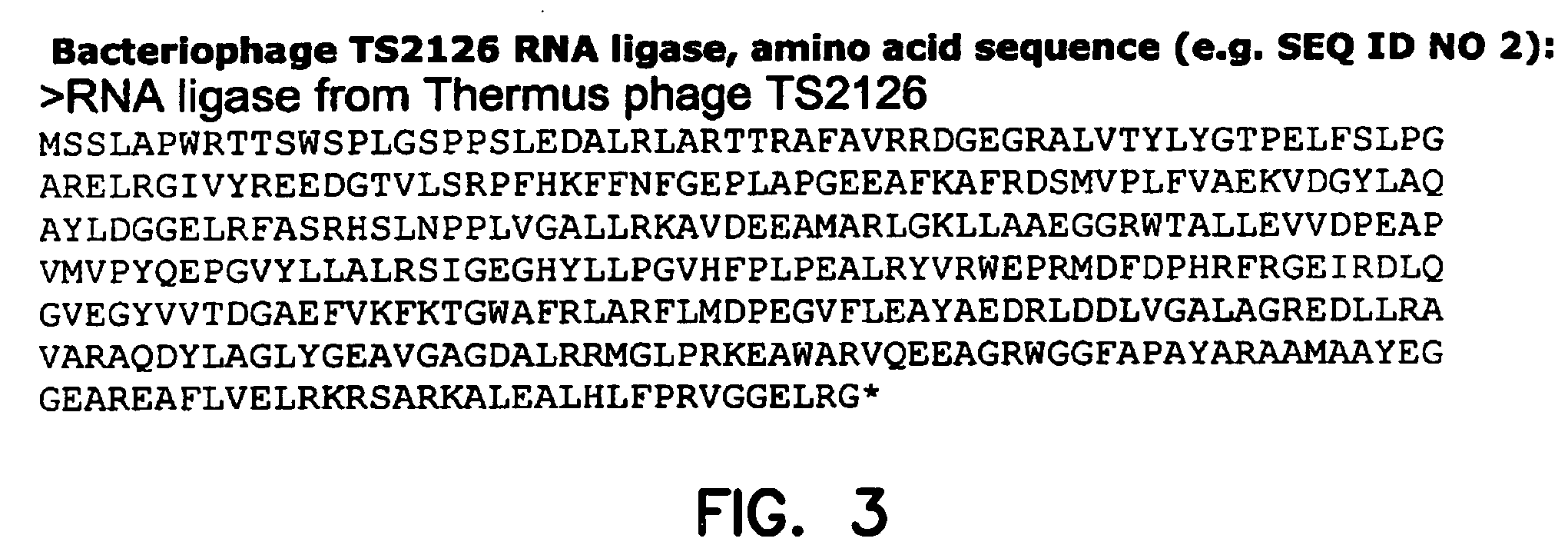Thermostable RNA ligase from thermus phage
a technology of rna ligase and thermus phage, which is applied in the direction of peptides, applications, peptide sources, etc., can solve the problem that dna is a much less efficient acceptor than rna
- Summary
- Abstract
- Description
- Claims
- Application Information
AI Technical Summary
Benefits of technology
Problems solved by technology
Method used
Image
Examples
example 1
Cloning, Expression and Purification of the TS2126 RNA Ligase
[0112] A clone containing the TS2126 gene was used to amplify the TS2126 gene by conventional PCR-methods. PCR products were run on a 1% agarose gel and DNA fragments of the correct size cut out. The fragments were. purified using GFX columns (Amersham Biosciences), according to manufacturer's instructions, and cut with restriction enzymes (BamHI and NdeI). The fragments were ligated into expression vector pET-23b (Novagen), cut with the same restriction enzymes, which was designed to add a histidine-tag to the C-terminus of the protein. The vector was then transformed into E. coli BL21-(DE3)-RIL (Strategene) and a clone selected after verification of the correct sequence by DNA sequencing. The cells were grown in a 10 L fermenter and production of the enzyme induced by IPTG in log phase. The cells were harvested and disrupted by sonication. After removal of cell debris by centrifugation was the enzyme purified using stan...
example 2
pH Optimum of TS2126 RNA Ligase
[0113] The activity assay for RNA activity is based on the Phosphatase resistant assay developed by Silber et al (Proc. Natl. Acad. Sci. U.S.A. 69:3009-3013 (1972))).
[0114] Reaction conditions:
2 μl5x ligase buffer (250 mM MOPS (pH 4-11), 25 mM MgCl2,5 mM DTT, 50 mM KCl, 125 μg / ml BSA).0.04 μgTS2126 RNA ligase. 2 μl32P-5′-rA20 RNA substrate (25 μM).1 ? lATP (10 mM).H2Oto 10 μl.
[0115] Each mixture was incubated at 60° C. for 30 minutes, and the reaction then terminated by heating at 95° C. for 5 minutes. 30 μl SAP cocktail, which includes 5U Shrimp alkaline phosphatase (SAP) in 1 ×SAP buffer (20 mM Tris-HCl (pH 8.0), 100 mM MgCl2) (USB Corp. Cleveland, Ohio), was then added and incubation continued for 3 hours at 37° C. After the incubation period, 10 μl where spotted on DE81 filters (Whatman pic. Kent, UK), washed twice in 500 mM Phosphate buffers (pH 7) and dried. The filters were transferred to liquid scintillation counter vials, 5 ml OptiGold ...
example 3
Temperature Optimum of TS2126 RNA Ligase
[0116] To examine the temperature optimum of the TS2126 RNA ligase, was the ligation reaction carried out at different temperatures for 30 minutes and then the activity determined by the phosphatase resistant assay (Silber et al).
[0117] Reaction conditions:
2 μl5x ligase buffer (250 mM MOPS (pH 7.5), 25 mM MgCl2,5 mM DTT, 50 mM KCl, 125 μg / ml BSA).0.04 μgTS2126 RNA ligase. 2 μl32P-5′-rA20 RNA substrate (25 μM).1 ? lATP (10 mM).H2Oto 10 μl.
[0118] The enzymatic activity of the enzyme as function of temperature is shown in FIG. 6.
PUM
| Property | Measurement | Unit |
|---|---|---|
| Temperature | aaaaa | aaaaa |
| Temperature | aaaaa | aaaaa |
| Temperature | aaaaa | aaaaa |
Abstract
Description
Claims
Application Information
 Login to View More
Login to View More - R&D
- Intellectual Property
- Life Sciences
- Materials
- Tech Scout
- Unparalleled Data Quality
- Higher Quality Content
- 60% Fewer Hallucinations
Browse by: Latest US Patents, China's latest patents, Technical Efficacy Thesaurus, Application Domain, Technology Topic, Popular Technical Reports.
© 2025 PatSnap. All rights reserved.Legal|Privacy policy|Modern Slavery Act Transparency Statement|Sitemap|About US| Contact US: help@patsnap.com



